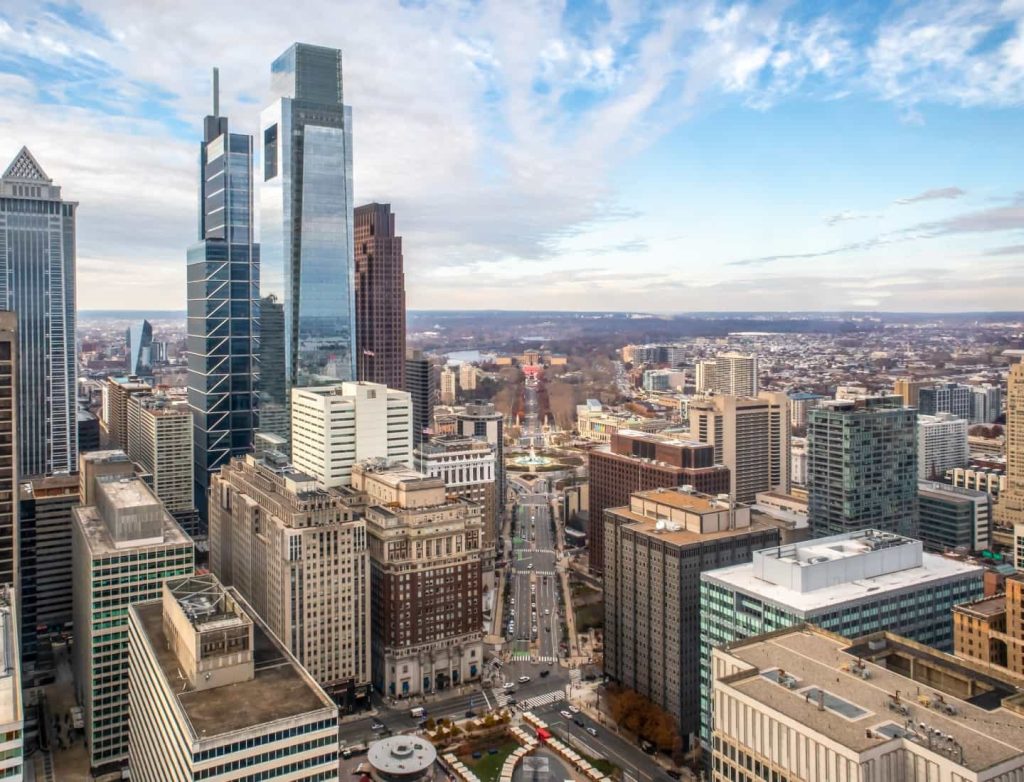Word on the street > We Need To Stop Innovating!; 10 Ways the AE Industry Won’t Change
Word on the Street: Issue 169
Weekly real-time market and industry intelligence from Morrissey Goodale firm leaders.

We Need To Stop Innovating!
The headline above is one of the core values of Luddite & Associates—a 50-person firm that prides itself on continually doing less work with more employees and will go out of business soon.
In reality, “innovation” in all its forms is front and center in almost every strategic plan in the AE and environmental industry. A lot of our strategy work today is helping clients get their hands around what “innovation” means for them and how to capture and monetize it.
Much of the discussion around “innovation” in board rooms centers around the potential of artificial intelligence (AI) and machine learning. I recently had the chance to connect with Javier A. Baldor, CEO of BST Global, whose firm has been at the forefront of research and thought leadership on these technologies that will transform the AE and environmental industry. Here are some highlights of my conversation with him:
![]()
Your team has been doing extensive research on the topic of innovation in the AE and environmental industry. Can you share with us some of your findings and observations?
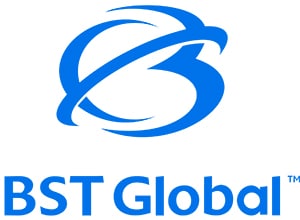
There is a series of system-level disruptions (as chronicled by Amy Webb at Future Today Institute) taking shape that will transform our industry and the world as we know it on a scale similar to that of the automobile, electricity, internet, and personal computing, but magnified. And while AI innovation may appear to be happening suddenly, it has actually been decades in the making, and the impact is truly astonishing:
- PwC estimates that AI’s impact on the global economy could be upwards of $15 trillion by 2030.
- According to Goldman Sachs Global Investment Research, 37% of current work tasks could be automated by AI for the architecture and engineering industry in the U.S. and Europe.
- An analysis by OpenAI and the University of Pennsylvania suggests that by incorporating software and tooling built on top of large language models (LLMs) like generative pre-trained transformers (GPTs), 47% to 56% of all work tasks could be completed significantly faster at the same level of quality.
![]()
When you look out five years, how will our industry have been changed by AI and machine learning?

I believe that five years from now, once these system-level disruptions have come to life and become mainstream, we will see an industry where:
- ChatGPT and other forms of generative AI have fundamentally transformed the way work is designed, performed, managed, and delivered. We will no longer bill for hours alone but will have reimagined and replaced this legacy business model with one that retains realized productivity gains of nearly 40%. The future will take the form of subscription billing and/or value/lump-sum pricing for just about all project engagements.
- The notion of a traditional “design or engineering” business is no more. It will have become a “data” business. In September, Accenture announced the appointment of its first Chief AI Officer and plans to double the company’s AI talent force to 80,000 people with a $3 billion investment over the next three years. Accenture, which recently acquired Anser Advisory in our industry, and its peers will make a significant entry into the AEC industry and create a new breed of consultancy that combines deep AI and data expertise with acquired engineering domain experience. It’s coming.
- The data-driven consultancy has become a reality. Big data strategies will have solved the quagmire of siloed data—whether it’s business- or ESG-related—and provided a strong foundation to not only unify and secure data, but more importantly, empower it by leveraging AI and machine learning to deliver predictive insights. Think about how we used to plan and navigate road trips. We used Rand McNally maps and atlases to manually select a route and were forced to deal with whatever roadblocks and detours that came up along the way. But now, we have data-powered GPS tools like Waze that use AI/machine learning models to process live, user-generated data signals and dynamically adjust the route to get us there faster by avoiding heavy traffic and accidents. Similarly, most firms in our industry currently use historical accounting data to run their projects and business at large, often responding reactively when project issues arise. But the future is all about leveraging data and AI/machine learning models to accurately predict project and business challenges and course-correct to deliver better outcomes. Everything will be predicted using AI/machine learning—profit to revenue, cash, staff demand capacity planning, and backlog (both soft and hard) to name a few.
Once this is in place, the real prize comes into play. The “tower-based model,” where staff enter data that flow upward only benefiting the few, has been inverted, and data are now “democratized.” Every person in your consultancy will have predictive data insights delivered to them in a simple, consumer-grade experience, which will empower them to work smarter, better, and more efficiently.
For those of you who love baseball like I do, I truly believe we are just in the top of the first inning when it comes to the application of AI/machine learning, big data, and ChatGPT in our industry. You are not late, but it is a 162-game season, and you don’t want to fall too far behind in the standings.
![]()
BST Global has specific domain expertise in the areas of AI and machine learning. How do you see these technologies impacting our industry? What opportunities or threats do they provide for individual firms?

I believe that the combination of these exciting technologies—such as AI/machine learning, big data, and ChatGPT—will usher in an era of unprecedented opportunity and prosperity for those consultancies that embrace it. Conversely, it may mean irrelevance or even extinction for those that don’t.
What is the closest parallel that comes to mind? Blockbuster vs. Netflix. Founded in 1985, Blockbuster was bought by Viacom for $8.4 billion in 1994. Three years later, Netflix was founded by Reed Hastings in response to a $40 late fee bill from Blockbuster. Netflix attacked an element of Blockbuster’s core business model: charging customers a fee every day they were late. At one point, Blockbuster made $800 million in late fees—or 16% of its revenue. In response to Netflix’s initial success, Blockbuster considered buying Netflix but ultimately walked away. In 2004, Blockbuster had 9,000 stores globally and earned $5.9 billion in revenue. In 2010, Blockbuster filed for bankruptcy and today has only one remaining Blockbuster franchise in the world. Where is it, you ask? Bend, Oregon.
I share this story as a cautionary tale. Which will you be? Consultancies enjoying an unprecedented backlog of business with seemingly no end in sight may feel they can ignore AI innovation, much like Blockbuster did at its peak while it witnessed historic revenue and ignored, denied, or scoffed at Netflix. It’s your choice, but the reality of the AEC industry’s next “Netflix” is coming, and it will be here sooner than we all think.
![]()
How do you recommend firms successfully foster and deploy innovation?
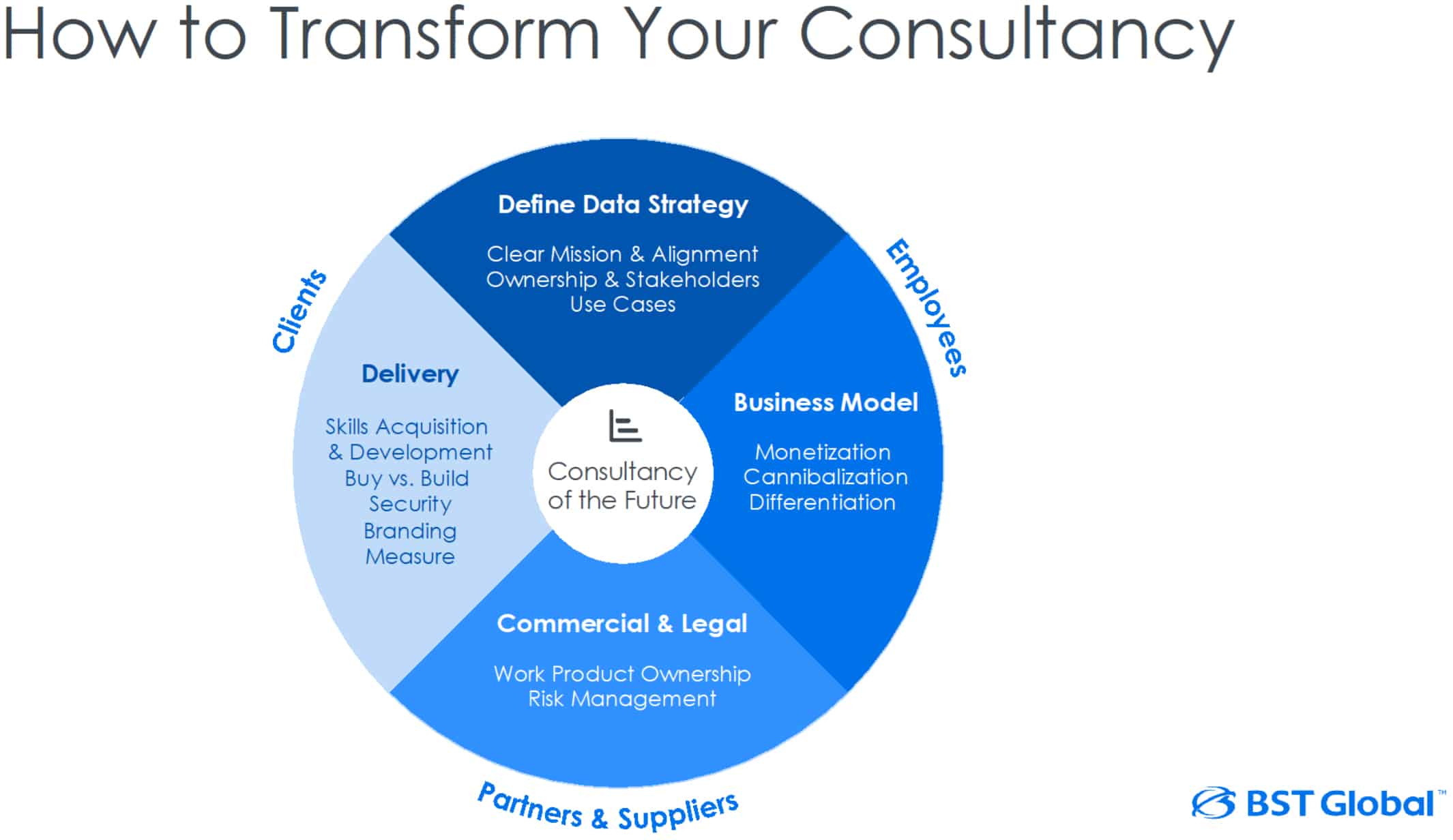

It all begins by understanding and embracing that the future is all about data. Once this is established, I recommend the following steps to achieve the transformation of your consultancy for the future:
- Define a data strategy with a clear mission—one that is aligned with your business objectives. Who is going to own this and who are the key stakeholders? I would advocate strongly for creating a Chief Data Officer (CDO) role—it’s all about leadership, after all. Based on our recent research, only five of the ENR Top 100 Design Firms have a CDO, and it’s a crucial area to leave devoid of leadership. Once you have the right leadership in place, be sure to avoid the temptation of becoming intoxicated by these “cool” technologies, and instead focus on a few key use cases that are narrow in scope and solve big problems.
- Thoughtfully consider your current and future business model. How will you monetize your data and how will that transform your business strategy? Blockbuster opted not to buy Netflix so it could maintain a business model that included sizable late fee revenue. Does your evolved business strategy cannibalize any current revenue streams? You should know this upfront. Additionally, how will you differentiate your offerings in this new data economy?
- Understand the commercial and legal implications of your AI and data strategy. If your staff are using ChatGPT or other generative AI technologies, it’s critical to know who owns that work product and the resulting data offering. You also need to consider what the associated risks are and how you will mitigate them.
- Identify how you will manifest and deliver your data strategy. What skills does your staff have now and, more importantly, what skills will they need for the future? I believe the engineer of tomorrow will not only need engineering skills because they will also be a software and data programmer/analyst. They will need to leverage low-code software applications and iPaaS platforms like Azure Logic Apps and accompanying Power App and Power Automate solutions, for example. Will you build the tools and apps to deliver client and/or internal solutions, or will you buy them from your software partners? Security must also be a paramount consideration in this era of cyber threats and ransomware. Last but not least, how will you brand your service and technology offerings and measure success?
![]()
You’re hosting an industry-first AI summit next spring. What are your goals for that event?

Our goal in hosting the BST Global AI Summit is to bring leaders from the world’s preeminent design, engineering, and environmental consultancies together to share how they are preparing for the AI-powered and data-driven future. It represents the first global symposium on all things AI for the AEC industry and will be an excellent opportunity to learn, plan, and strategically position your firm to leverage these transformative technologies.
We plan to host this global event in Florida in the spring of 2024. Additional details can be found at www.BSTGlobal.com/AISummit.
You can meet Javier and the BST Global team at our Texas and Southern States M&A, Strategy, and Innovation Symposium in Houston later this month where they will once again be hosting The BST Global Innovation Series panel.
To contact Mick Morrissey about Luddites and other historical anomalies, you can email him at [email protected] or call/text on 508.380.1868.
10 Ways the AE Industry Won’t Change
Change. You can set your watch by it. It’s constant. It’s relentless. It’s all-consuming. And AE firm leaders deal with it day and night. Whether it’s the digital transformation, the remote work and education revolution, climate change, geopolitical conflict, supply chain disruptions, or the confounding economy—you name it, it’s changing. It’s not all bad, of course. Change can bring about improvement, excitement, and hope. But even so, being on your toes 24/7 can take a heavy toll.
Wouldn’t it be nice if we could count on something—anything—to remain the same, even for a little while? Couldn’t we all use a little stability—just a few things we could hang our hats on for years to come? Believe it or not, through seemingly never-ending upheaval, there are still some aspects about the AE industry that will continue to hold up over time. Here are 10 of them:
1. People will still run this business. Maybe not forever, but for now, that’s the way it is. People produce exceptional service. People deliver terrific quality. People provide valuable expertise. And they will tomorrow, too.
2. Client relationships will still matter. The importance of building and maintaining strong client relationships will remain a constant in the AE industry. How those relationships are cultivated will surely evolve from one generation to the next, but any new methodologies will be aimed at producing the same outcomes—such as trust, communication, and understanding client needs—which are timeless principles and unlikely to change.
3. Expertise and specialization will still be a human thing. Technology has certainly led to significant advancements in the AE industry, and it is likely to continue to play an increasingly important role. But it won’t replace human expertise. Many decisions architects and engineers make involve complex and nuanced considerations that go beyond data analysis. These decisions often require creativity, contextual understanding, and the ability to balance multiple competing factors—qualities at which we humans tend to excel.
4. Ethical and social factors will remain in our hands. Architecture and engineering professionals often have to consider ethical and social implications in their projects, such as ensuring buildings are accessible, environmentally friendly, and culturally sensitive. AI still lacks the capacity to make value-based decisions and navigate these complicated ethical considerations.
5. Responsiveness will still be a differentiator. How many of us have the discipline to quickly respond to a request from someone inside or outside our firms? We don’t like it when we have to call our attorney three times to get a simple document finalized or ask an employee five times to return a client call. It’s a huge time-waster and incredibly frustrating. Those who depend on you or want to reach you don’t like it any better when they bring an important issue to your attention and it takes you two weeks to respond. And in a society that’s growing more impatient by the day, responsiveness will become increasingly coveted.
6. The importance of collaboration won’t diminish. Collaboration will remain essential for providing comprehensive services. Cross-functional teams and knowledge sharing will continue to be important for accessing expertise, innovation, problem-solving, quality control, risk mitigation, morale, and more.
7. Quality will never go out of style. Delivering quality is a timeless expectation. It has to be—there’s too much at stake. Aside from the obvious life and safety consequences, there are other considerations, such as your firm’s reputation, exposure to a whole host of liabilities, and the missed opportunity to contribute something meaningful and impactful to the world.
8. Continued learning and development will always be required. There’s that pesky change again. We’ll always need to stay on top of it. Keeping up with industry trends and evolving skill sets is crucial. Professional development and learning will always be important for staying competitive.
9. An AE firm’s reputation will always be fragile. A sterling reputation takes a long time to build. Anyone who has started their own firm can attest to that. Trust and respect don’t happen in the blink of an eye. It takes years of dedicated service and consistently delivering value to build a recognized and respected brand. And yet we’ve all seen plenty of examples inside and outside the AE industry of how fast it can all come crashing down. A mistake here, an over-the-line comment there, or plain old bad judgment can be the wrecking ball that instantly obliterates your crystal display.
10. People in our business will still try to do the right thing. This isn’t blowing smoke. The AE industry is made up of great people. They’re not just smart, talented, and dedicated—they have integrity. They try to do the right thing. Virtually every firm I work with includes some form of truthfulness in their value statements—and they live it. Sure, there are individuals who are not necessarily well-intended, but they are the outliers. This industry is made up of trustworthy people who share a desire to make the world a better place for us and future generations. I don’t see that changing anytime soon.
While the way AE firms deliver their services may have evolved in response to the pandemic and technological advancements, the core values and principles that underpin their operations are less likely to change over time. These enduring aspects are foundational to the profession and will continue to guide firms in their interactions with clients and the broader business environment.
Mark Goodale can be reached at 508.254.3914 or [email protected].
Market Snapshot: Land Transportation (Part 1)
Weekly market intelligence data and insights for AE firm leaders.
Overview
- The land transportation construction category includes:
- Mass transit facilities for light rail, monorail, streetcar, and subway systems
- Railroad tracks and bridges
- Bus and railroad passenger terminals
- Freight terminals and maintenance facilities for buses, railroads, and trucks
- About 60% of the spending in this category comes from state and local governments, and 40% is private investment.
- Based on 2022 data from the U.S. Census Bureau, the land transportation category represents 51% of total transportation (transportation includes land, air, and water; excludes roads and bridges), which accounts for about 6% of total nonresidential design and construction work.
Market Size
$30.0 billion*
*Based on 2022 Value of Construction Put in Place (CPiP)
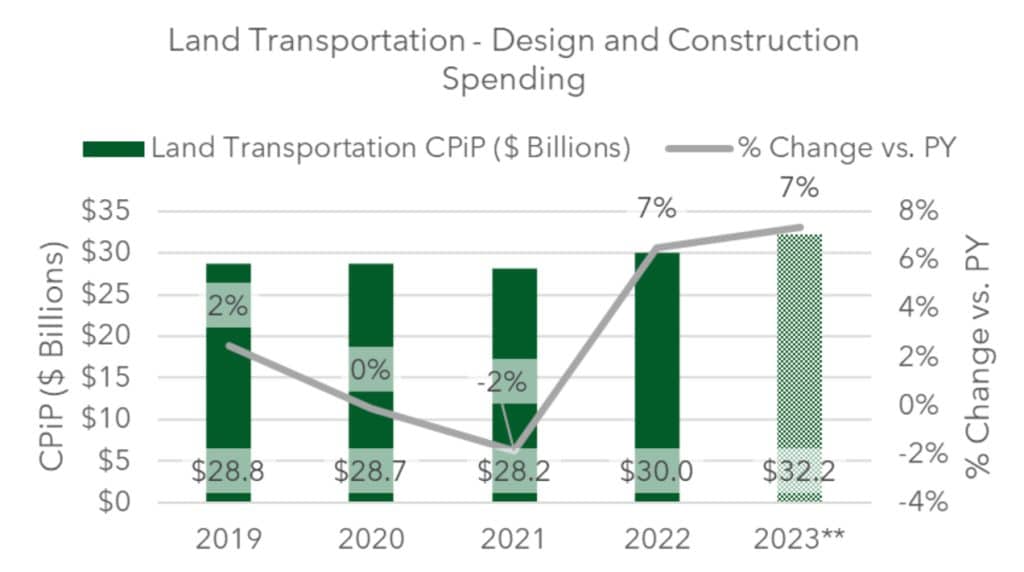
** Annualized estimate as of August
Outlook
- Land transportation project spending is expected to be about 7% higher in 2023 compared to 2022 based on the latest estimate, which includes the month of August. At this rate, the category will reach a 2.9% spending five-year compound annual growth rate at the end of this year.
- State and local spending in land transportation is trending towards a 3.4% increase this year. This growth is being driven primarily by passenger and freight terminal work, while the mass transit subcategory is headed in the opposite direction. Rail freight infrastructure may be the main source of market growth within land transportation over the next few years.
- Although transit ridership has been rising in 2023, it is still well below pre-pandemic levels and continues to put pressure on operators.
- Private investments in land transportation have been growing at a faster pace than those within the public sector, with spending expected to be up almost 14% in 2023 compared to 2022.
In next week’s issue, we’ll look at drivers, trends, and hot spots for this sector. To learn more about market intelligence and research services from Morrissey Goodale, schedule an intro call with Rafael Barbosa. Connect with him on LinkedIn.
Weekly M&A Round Up
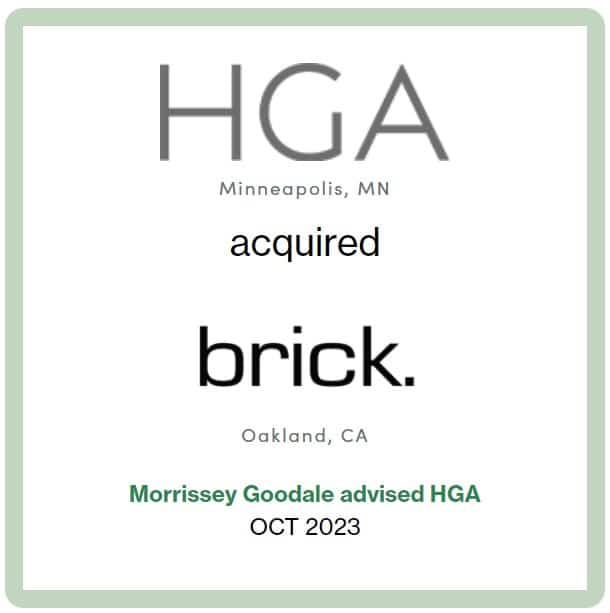
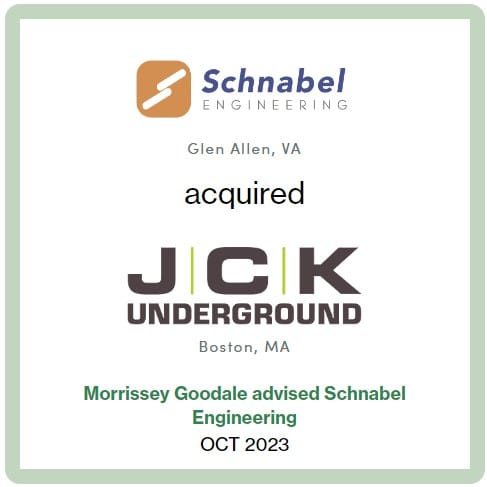
Congratulations to HGA (Minneapolis, MN) (ENR #111): The interdisciplinary design firm acquired brick. (Oakland, CA), a 25-person architecture firm. brick.—now HGA Oakland—will maintain a continued focus on designing complex urban infill, mixed-use, community, and other developer-led projects in regional urban cores.
Another congrats to Schnabel Engineering (Glen Allen, VA) (ENR #204): The leading tunnel, dam, geotechnical, and infrastructure engineering firm acquired JCK Underground (Boston, MA), an industry-recognized leader in tunnel engineering. The acquisition will result in an expanded depth of resources and a broader range of capabilities, while maintaining a collaborative and agile approach to projects that clients have come to expect.
Six ENR Top 500 Design Firms announce new deals: Last week six ENR Top 500 Design Firms announced new transactions, pushing U.S. M&A over 330 deals year-to-date. With still a quarter to go, 2023 is already the third most active year for industry consolidation on record. You can check all the week’s M&A news here.

Searching for an external Board member?
Our Board of Directors candidate database has over one hundred current and former CEOs, executives, business strategists, and experts from both inside and outside the AE and Environmental Consulting industry who are interested in serving on Boards. Contact Tim Pettepit via email or call him directly at (617) 982-3829 for pricing and access to the database.
Are you interested in serving on an AE firm Board of Directors?
We have numerous clients that are seeking qualified industry executives to serve on their boards. If you’re interested, please upload your resume here.
June 12-14, 2024 Las Vegas, NV
Western States M&A and Business Symposium
Join us for the 10th annual Western States Symposium, bringing together over 200 AE and environmental industry executives and investors in one of the world’s most vibrant and iconic cities.
Learn More
Subscribe to our Newsletters
Stay up-to-date in real-time.


